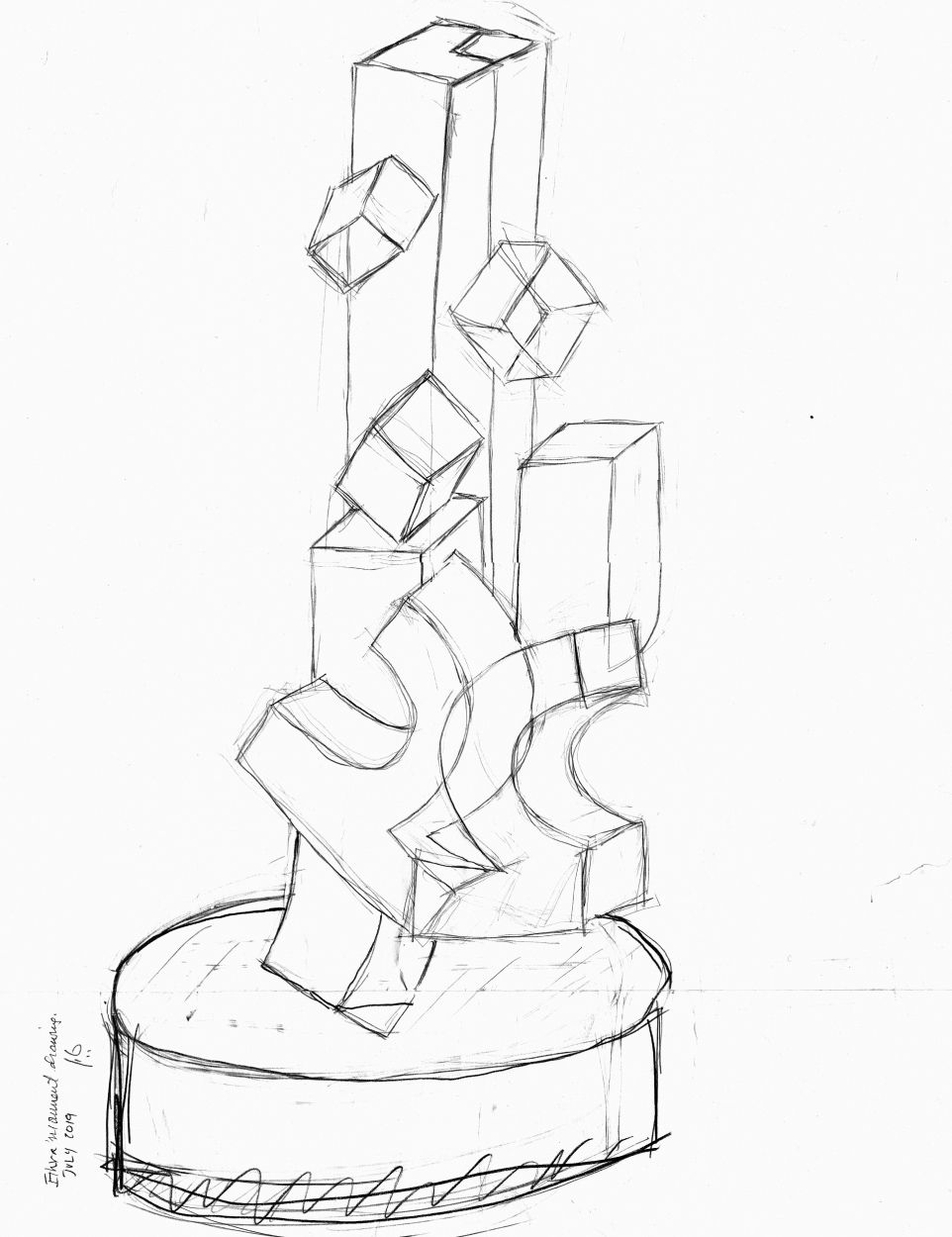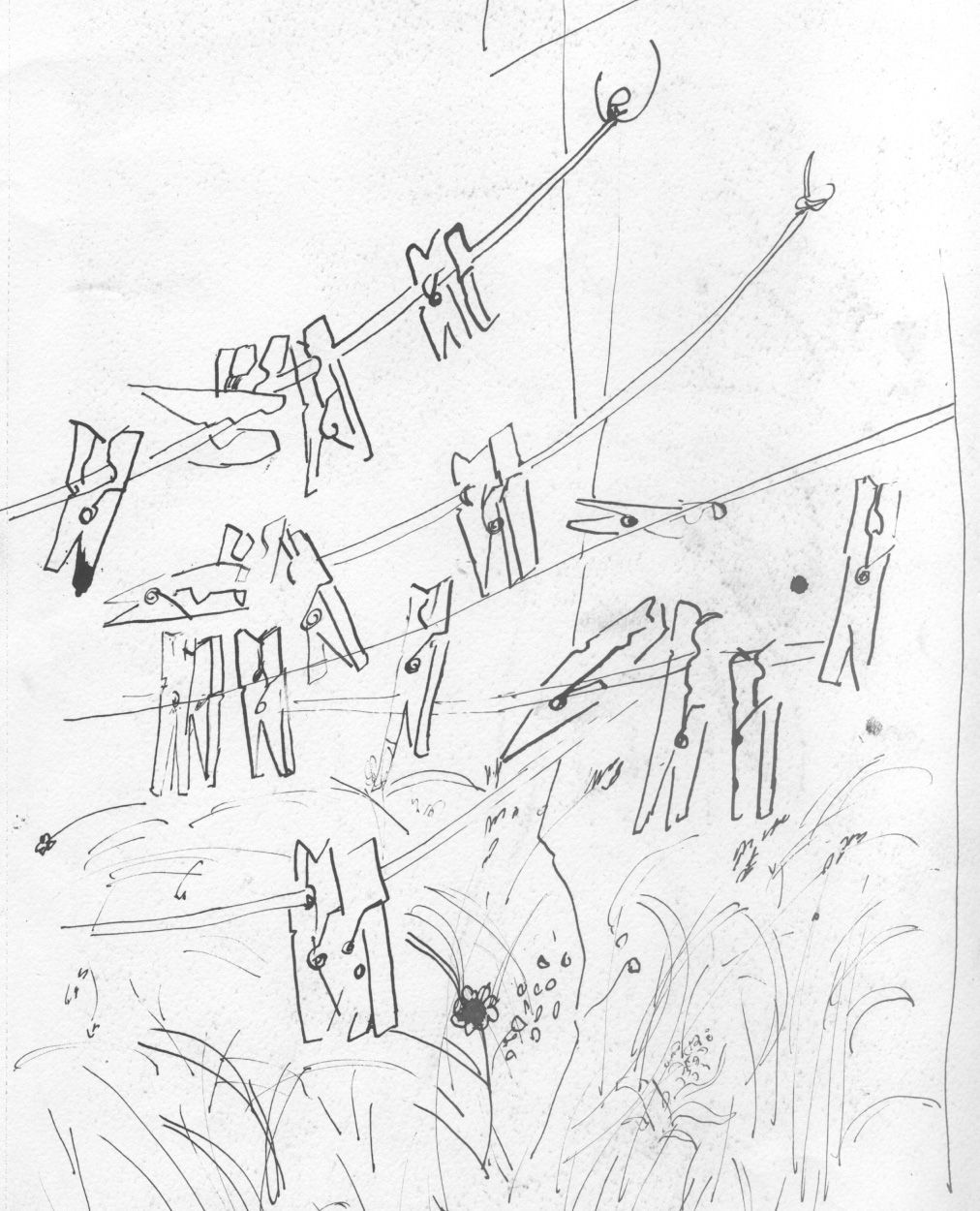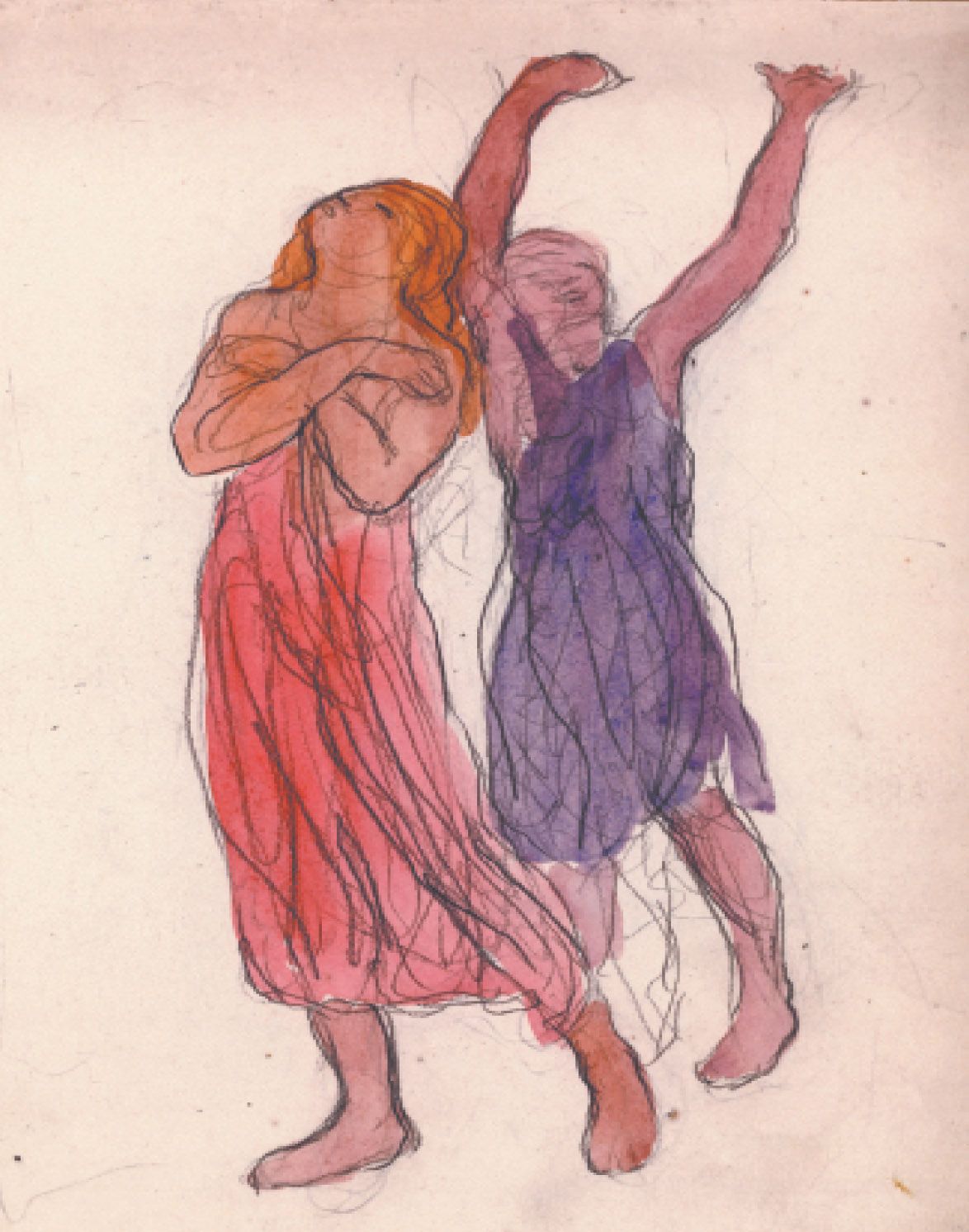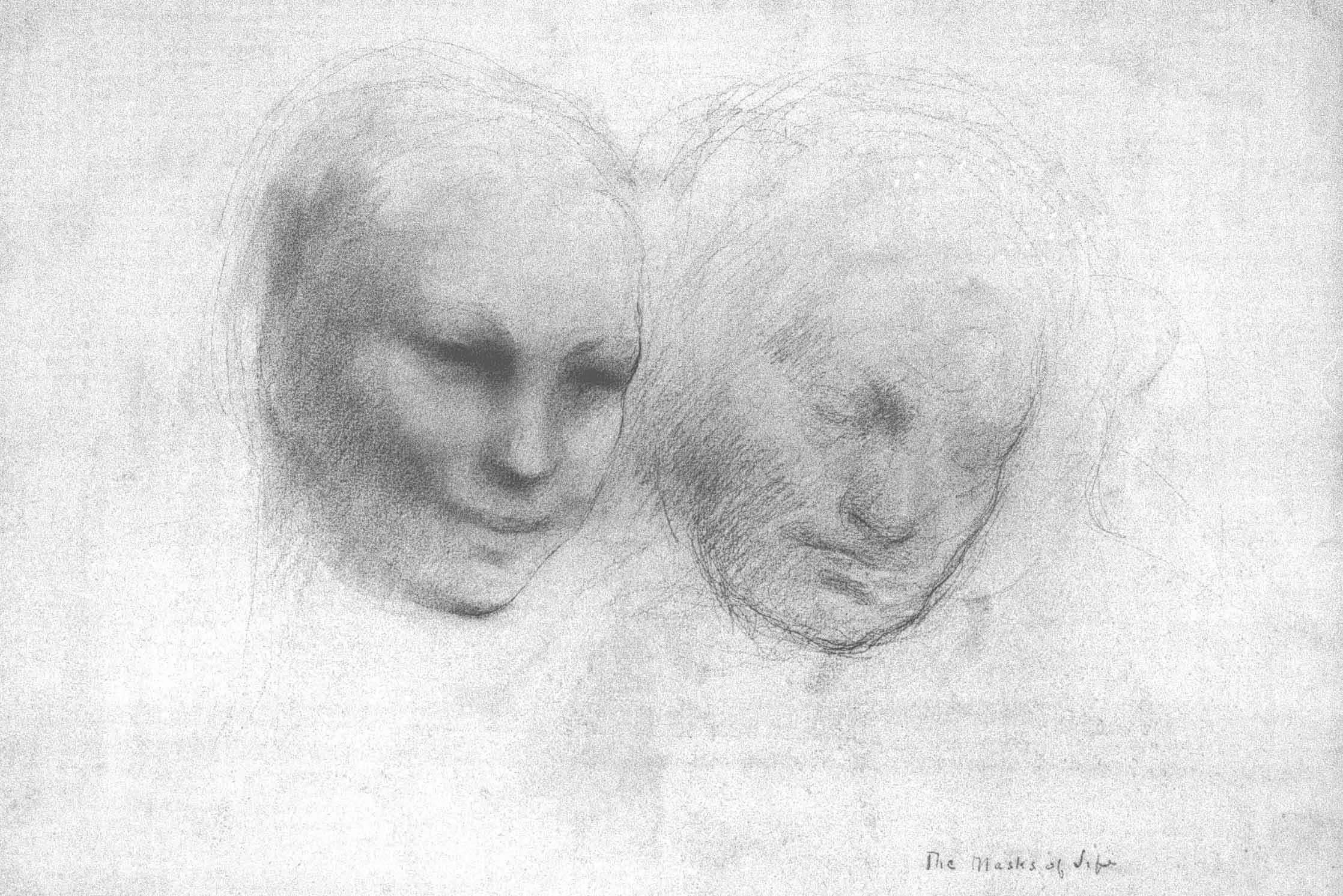A Life in Sketches
Men and Women sketch. Courtesy of the artist.

The artisit, Kameel Hawa. Courtesy of the artist.
For the past 50 years, Kameel Hawa has been leaving his own artistic legacy on the ever-evolving art scene. With no formal education in art, he became one of the most prominent artists in the Arab world with the belief that art comes from the soul.
Known for his innovative graphic design, calligraphy, and typography art pieces, yet it is his life-long love of sketches that is closest to his heart.
We find out more about his passions, his philosophy, his past and present and hopes for the future. We also dive into his artistic mind to explore his creative process and to understand how he perceives and forms art.
Art is a very deep aspect of human existence and human progress. From ancient times, and for thousands of years, human beings expressed themselves artistically one way or another in drawing, painting, writing, and later in poetry and all sorts of arts. So, art is a very deep aspect of human existence, of human expression. I think it saves the human soul when human souls are troubled by either the instants of nature, social strife, social conflict, politics, or war, etc. Art is a continuous companion of human well-being.

Self-portrait of artist as a young man. Courtesy of the artist.
said Kameel Hawa
What inspires me is beautiful form. A beautiful form that has a human dimension. What I mean by a human dimension, is that it's something that affects the human feeling. For me, art is feeling. I can give you a simple example: the birds on a wire; why does it inspire me or inspire other people? Simply because I think, first of all, it is beautiful and it makes you feel that this bird resembles you exactly like when you sit on a balcony or the shore of the sea, and you are looking at nature.
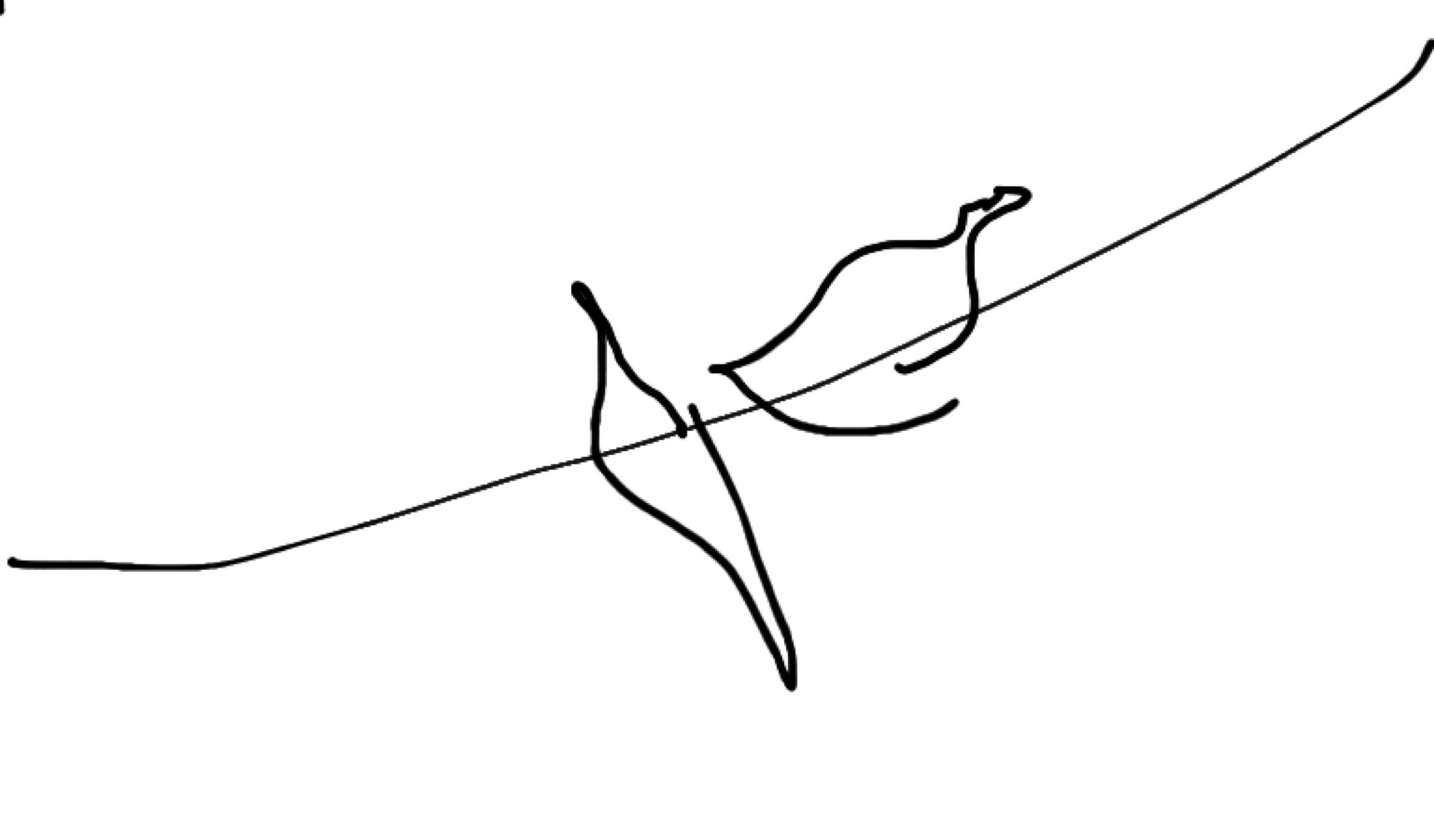
One of Kameel Hawa’s famous sketches: The birds on a wire. Courtesy of the artist.
You are contemplating, you are dreaming, you are thinking. Somehow you are relating to the bird on the wire. This is one-way inspiration taking place.
I'm also inspired by the idea; it is one of my main movers.
People sometimes realize what inspires them, but not always. For me, an artist being a painter, poet, or musician, is inspired by many things during the hours of the day.
Creativity is the accumulation of impressions in the inner self of the artist. These impressions accumulate and create some kind of a collection of impressions in one place, and at a given moment, a catalyst in the self of the artist triggers his initiative to do a painting, write a poem, or write a musical piece as if he starts to pull the thread out of himself into whatever he is creating. This is how I describe the creative process.
They are two different things: a drawing is a complete activity while a sketch is a starter. When I sketch, it is usually a very quick thing, where I'm trying to compose the figure and at the same time to get into its inner soul. Drawing is something I cannot turn into a painting but only when I sketch something I can turn it into one and some of my best paintings are from very quick sketches on any piece of paper, sometimes on napkins.
Actually, I'm a bit biased toward sketches because I think that they capture the virgin feeling that you develop into a painting; but the sketch remains somehow hiding a secret with a deeper feeling. This is the first time I have said this, and I believe in it very strongly.
Art grows as an inner feeling, that then gives us the power to change form. This also makes product innovation a kind of artistic expression.
For me personally, in the highest moments of expression, there is a strong internal passion plus some fear. It is like when you see something very beautiful, and you hold the camera because you are afraid it could go away, so there is this factor of fear and anxiety while you are drawing. This is true in every love affair, when a boy is in love with a girl, he will be passionate and happy but at the same time a bit anxious. so, a sketch is a mixture of enthusiasm, of passion, and of fear.
For the typographic sculpture, it is not enough to have a third dimension; it has to have a fourth one. It comes from a special feeling that the artist injects into the work.
I think some of my works, like Beirut or like "فن" sculpture have this character to some extent, but the Ithra (sculpture) has the superior characteristic, which is the following: you can turn all the typographic sculptures in the street to two-dimensional, by compressing it back to how it was as calligraphy.
With the Ithra sculpture you can't do that, as it was born three-dimensional; you can't bring it back to its two-dimensional state. And I don't think there are many typographic sculptures like this. In my opinion it surpasses all my other works in terms of composition. When I was sketching it, I took a white piece of paper, and I drew it only once, I nearly didn’t change anything in the drawing that came out. I’m really proud of this work.
I believe that the line and any line is the source. Once the pencil goes on the paper and completes the circle, I nearly have the whole painting done. The line has within it a secret coding for the shape and the color and the expression for whatever the sketch is.
Drawing a seated woman was for me an attempt to uncover the secret of the feminine character that is showing more when she is sitting. Most of the women I drew were thinking or contemplating and for some, they were waiting, and waiting is actually present in many of the titles of my paintings. Personally, I believe that women –probably more in the east than in the west– when they are sitting, there is a lot of feeling around the position of the seating because the woman is always careful, anxious and there is more expression in the seating of a woman than there is in the seating of a man. But not absolutely, not in every case, as I have drawn seated men and old men too.
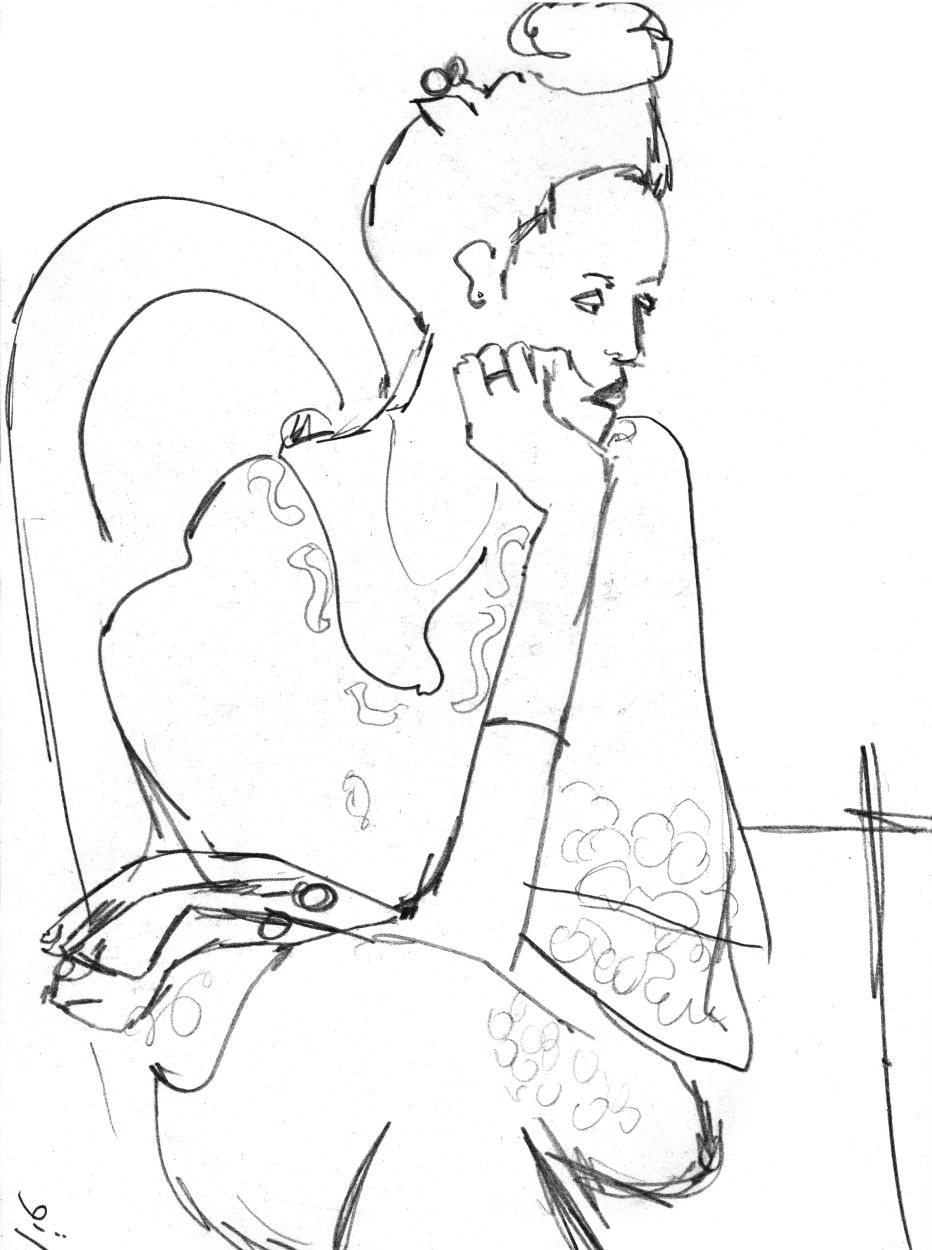
Pencil sketch for Woman in red thobe. Courtesy of the artist.
Personally, a lot of people tell me that some of my work looks like the work of Matisse, the French artist. I like very much all the crew of impressionism and post-impressionism, Van Gogh up to Picasso. Now I think Picasso is a savage artist (laughing), and that Matisse is a finer craftsman, but Picasso broke all the forbidden. He broke all the rules of morals, form and of composition. A documentary film about Picasso influenced me greatly, where he would draw, build, and destroy, over and over again. He would start again on a painting and change it over 40 times. If you take snapshots, you will have a book on Picasso of 40 artworks that do not exist.
To be frank, visual art didn’t start very strongly in the Arab world. I’m talking about paintings, about sculpture ...etc. Other arts are more related to Arab heritage like poetry, literature, and music and that is why you can see that they have a stronger and more impactful existence in Arab life. You don’t have a very strong clear movement of Arab visual art, and even graphic design is very recent; for example, the American University of Beirut is 150 years old, and the graphic design department just started 25 years ago.
All art, but visual art in particular, is strongly related to social progress. If you review western art, you’ll see how strongly it is related to social and economic development. If you take the last hundred years, you go to art nouveau, art deco, and then the impressionists. All of these are very strong and very rich experiences of art and are linked to social progress and philosophy. They don’t come out of nothing, as individual initiatives.
For me art is not individual although art can’t be but individual. Art is a social phenomenon that is related to time and place, not to individuals, although individuals produce this art. Music form is related to periods of history, so you won’t find a new significant classical piece for 100 years or more. There are thousands who play classical music these days, but it is not the same as composing; the days of composing ones are over.
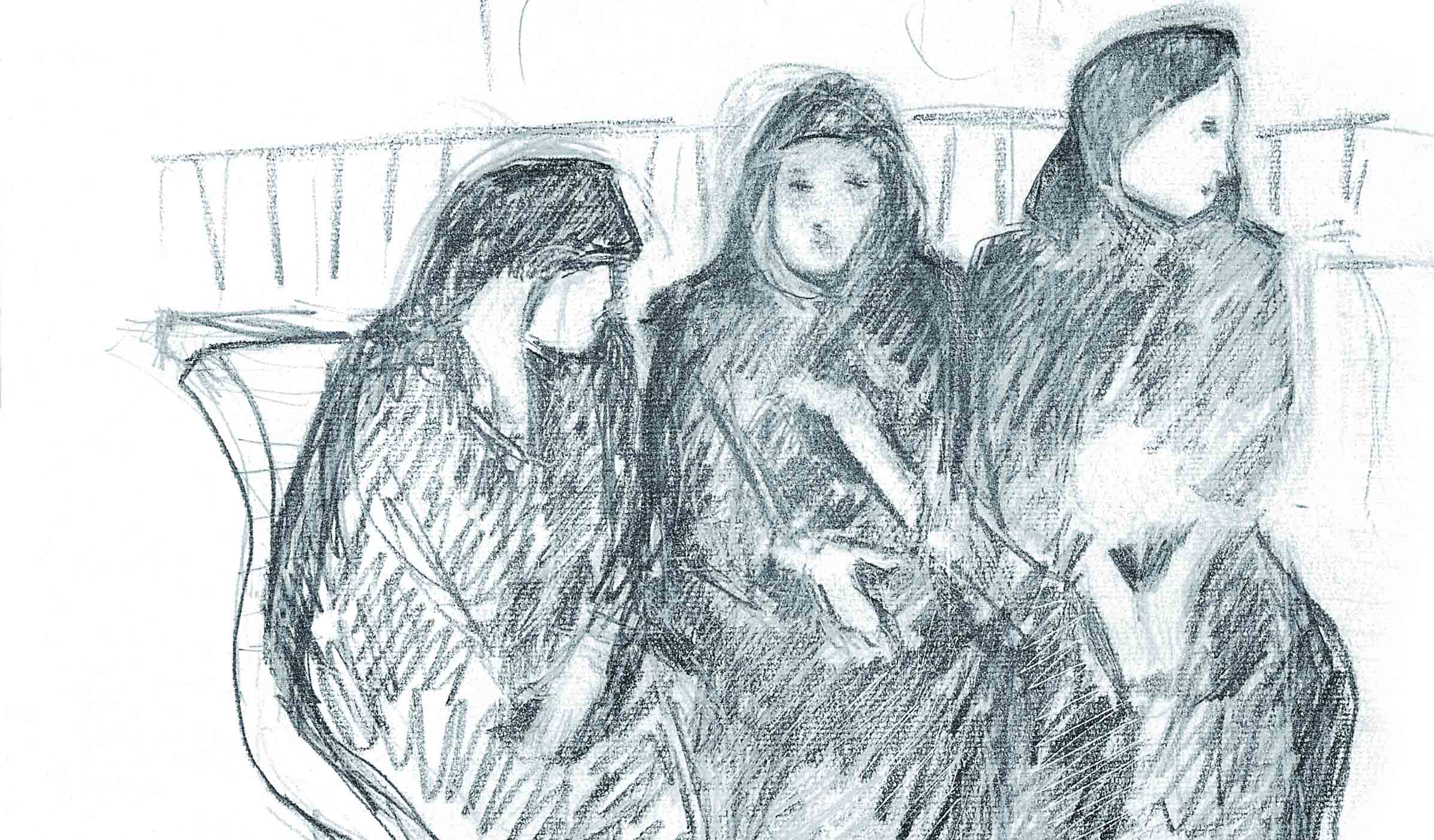
Waiting for the children sketch. Courtesy of the artist.
I once read a phrase by an Egyptian thinker, and he said "الابداع في مقاومة الابداع” (Creativity is by resisting Creativity). Don’t run after being creative. In my opinion, the artist has to let his feelings mature. And if I want to advice Saudi artist, I would like to say first to interact with international art, and not to pursue belonging to it. In my opinion, art is a feeling in the first place, and the artist who is keen on his work is keen on his feelings and makes sure that the work he does is linked to his feelings with a real connection. I think the best art comes out of the soul.

“When I drew the sketch, I felt like I was drawing Okaz marketplace itself.”Okaz festival logo sketch. Courtesy of the artist.
The moment that has a strong feeling, the produced sketch comes out almost done and easy to finalize. For example, the sketch I drew for the poetry festival’s logo, I finished it within 10 seconds, and I couldn’t believe it was done, so I drew again and again, and the same logo would come out.
Mr Hawa is still creating, and inspiring future artists through his teaching and mentoring. He finds beauty in the small things and continues to capture bits of his soul through his amazing sketches.
We thank him and his creativity.
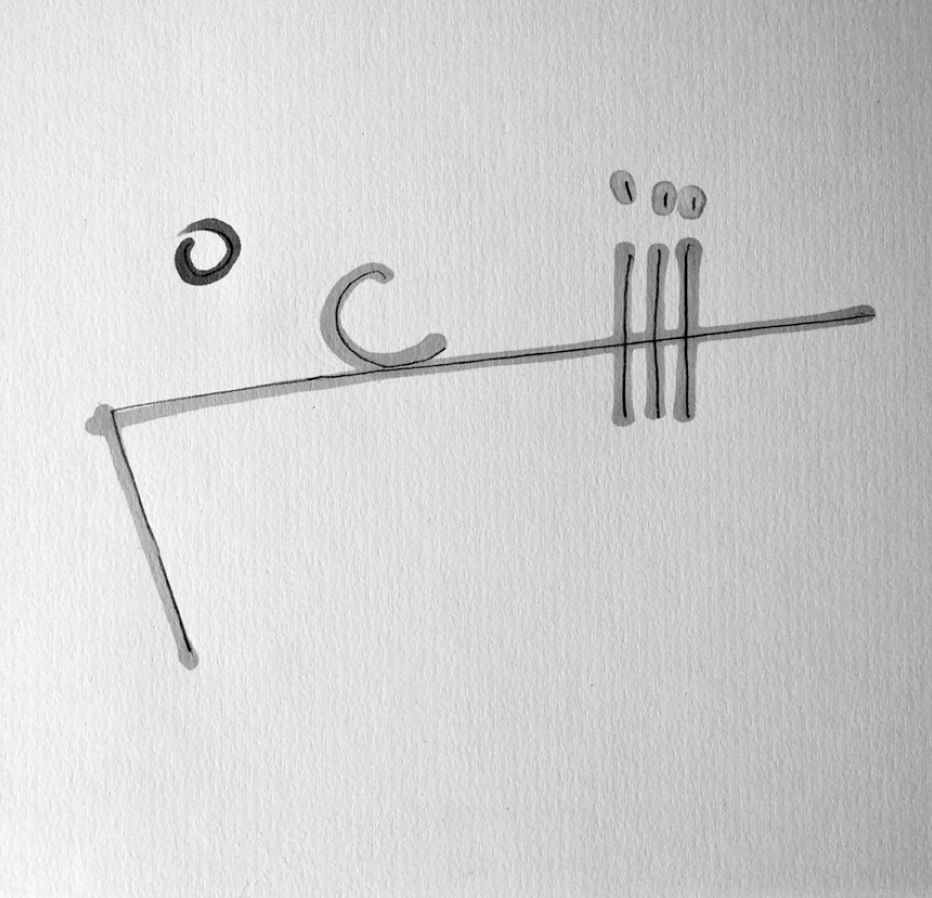
Poetry festival’s logo sketch. Courtesy of the artist.
